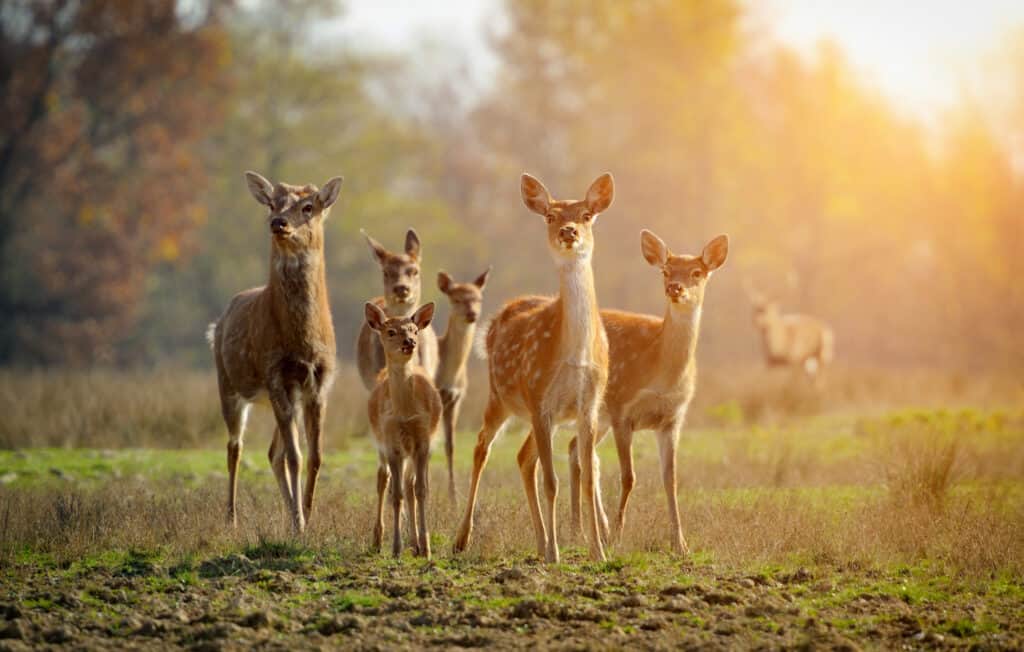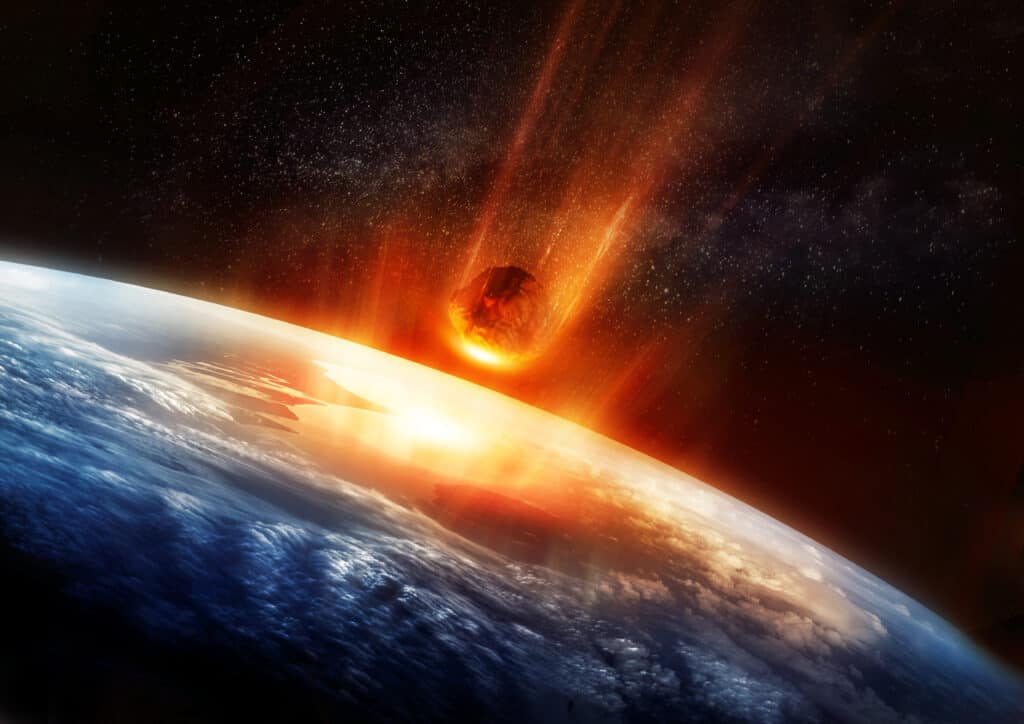The rural township of Calvin, Michigan is close to the state’s southern border with Indiana. This location was a stop on the Underground Railroad, which helped escaped slaves get as far north as possible. Today a little over 2,000 people call it home. It’s a calm place with little excitement. But one day about 450 million years ago, it was the most exciting place on the planet. On that day, Calvin was hit by a meteor that left behind a five-mile (8.5 km) wide crater. The Calvin Crater is the largest impact crater in Michigan.

Today, Calvin, Michigan is a peaceful rural area, but about 450 million years ago, it had the worst day in its history.
©Volodymyr Burdiak/Shutterstock.com
A Crater That’s There, But You Can’t See It
They say if you’re driving through a small town, “Don’t blink or you’ll miss it.” In the case of Calvin Crater, it doesn’t matter whether you blink or not. Unless you know exactly where to go, you will most definitely miss it. It’s buried 100-400 feet underground and was only discovered in 1987. Randall Milstein of the Michigan Geological Survey was studying data from 100 gas test wells drilled in the area. He discovered, among other evidence, shock-metamorphosed quartz that showed the stone of this area had endured a powerful impact.
Further study showed the site to be five miles in diameter with a discernable circular rim and a central dome. This is characteristic of meteor impact craters. Nearby drilling turned up micro-spheres of material that formed during the impact and were scattered over the surrounding area. Researchers think the object that struck was the size of three football fields. It hit as long ago as 450 million years, during the Ordovician Period.

Quartz crystals are valued by collectors. At the Calvin Crater site, shock-metamorphosed quartz provide evidence that a meteor hit there.
©ju_see/Shutterstock.com
What Animals Lived When the Meteor Struck?
During the Ordovician Period (488-433 million years ago), when the biggest impact crater in Michigan occurred, most of Earth’s land united into a supercontinent in the southern hemisphere known as Gondwana. This was long before the era of the dinosaurs. In fact, no fossils of land animals have been recovered from this period, but scientists have identified tracks and burrows that may have been produced by something like a millipede. The earliest plant fossils date to this period, including lycopods that sometimes grew into trees more than 100 feet tall.
In the Northern Hemisphere, most of the Earth was drowned under a humongous ocean. Michigan was near the equator and covered in a shallow tropical sea. Fossils from the Ordovician Period help us put together a picture of oceans full of invertebrates like trilobites and brachiopods, cephalopods, corals, snails, clams, sponges, sea stars, and algae. Armored fish called ostracoderms swam the oceans during this era. Their fossils are the oldest vertebrate fossils ever found. This tropical, Caribbean-like environment was shattered when a meteor slammed into Earth and created what would become the biggest impact crater in Michigan. There’s no doubt it would have set off a massive tidal wave and swamped the shores of any nearby islands.

Corals are some of the early species of marine life that lived in the shallow sea that covered North America during the Ordovician period.
©Natalia Siiatovskaia/Shutterstock.com
What Animals Live in Michigan Today?
Michigan has come a long way since the Ordovician Period. It has exchanged its sea for land, its tropical climate for a humid continental one, and its saltwater for freshwater lakes and streams. It still teams with life today, just a different, more modern kind. Hunters, anglers, and campers might spot white-tailed deer, raccoon, river otter, beaver, muskrat, mink, black bear, coyote, gray wolf, bobcat, red fox, bald eagle, great horned owl, peregrine falcon, wild turkey, Canada goose, pileated woodpecker, or the sandhill crane. Fish still thrive in Michigan’s lakes, ponds, and rivers. Some of the main species are the walleye, northern pike, muskie, bluegill, crappie, and several species of trout, perch, and salmon. It’s a habitat that attracts not just animals, but people who for one reason or another like to be near them.

If a meteor of 1,200 feet hit Michigan today it would shatter windows in New York City, Washington D.C., and St. Louis.
©solarseven/Shutterstock.com
What If a Meteor Hit Michigan Today?
A meteor that was approximately 1,200 feet wide passed near the Earth in August of 2022. If it had hit Michigan, it would have vaporized everything at the impact site. Additionally, it would have created earthquake-like shockwaves that people could feel hundreds of miles away. Burning molten rock would rain down across the whole region, igniting forest fires.
Windows would have been shattered all over the state and up to 500 miles away. This means areas as far away as Ottawa, New York City, Washington, D.C., and St. Louis would have been affected. Ash and soot particles from the fires would have risen into the higher levels of the atmosphere. They would have created a worldwide cooling effect that could last for years.
Fortunately, impact meteors are a rare occurrence. Human environmental impacts are a bigger concern than cosmic ones. Nevertheless, if you live in a sleepy town, a story like this might make you appreciate the lack of excitement.
The photo featured at the top of this post is © Triff/Shutterstock.com
Thank you for reading! Have some feedback for us? Contact the AZ Animals editorial team.






